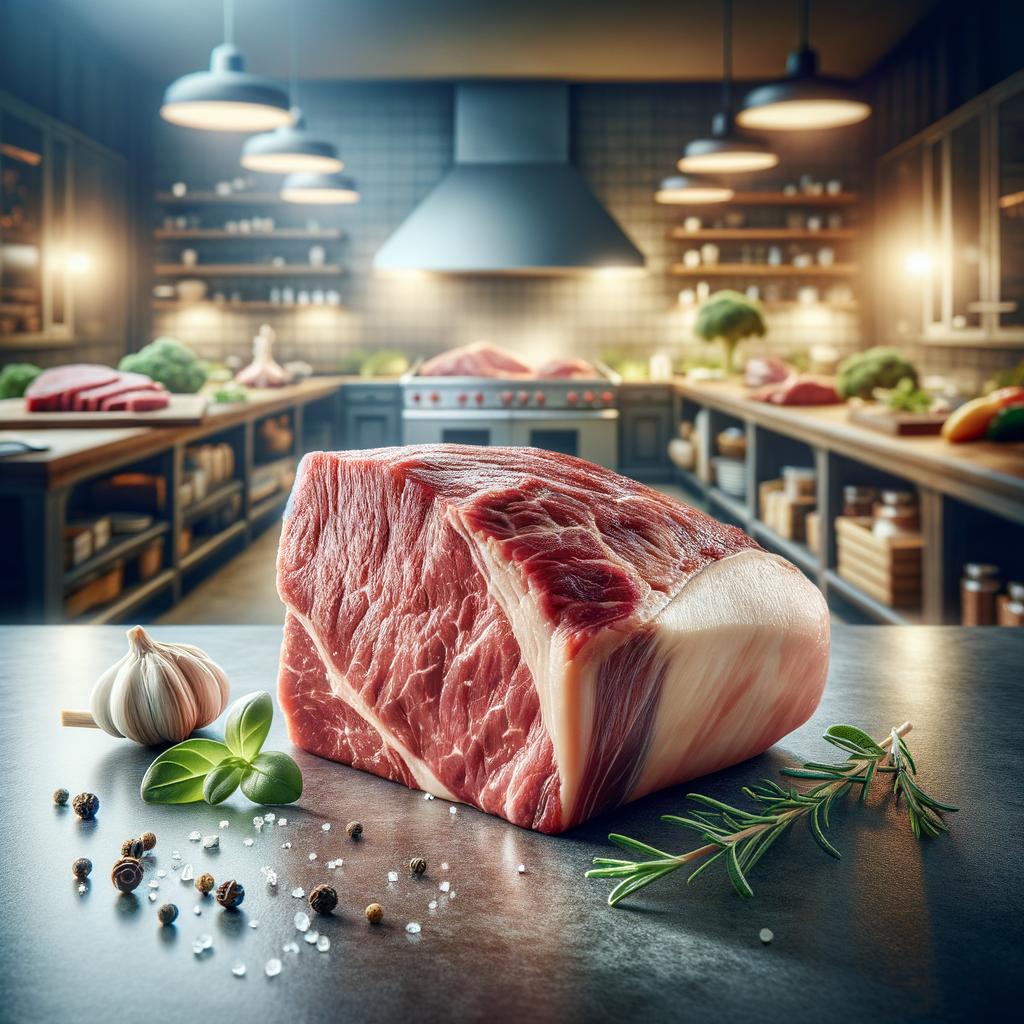Boneless Lamb or Beef

Description
Boneless lamb or beef is a delightful ingredient that has graced our dinner tables for centuries. It is a versatile meat, tender and succulent when prepared correctly. Its appearance varies from a deep, rich red to a lighter, more delicate pink, depending on the specific cut and animal's age. The texture is smooth and firm, yet yields easily under the knife, promising a mouthful of pleasure with every bite. Its flavor is robust, full-bodied and distinctive, a harmonious blend of savory and sweet undertones that can be further enhanced by herbs, spices, and marinades. What sets boneless lamb or beef apart is its ability to absorb and complement a myriad of flavors, making it a truly global ingredient.
Primary Uses
Boneless lamb or beef is a culinary chameleon, adapting to various cooking methods and recipes with ease. It's commonly used in a multitude of cuisines, from the hearty Irish stews, Middle Eastern kebabs, to the delicate French ragouts. It can be roasted, grilled, braised, or stewed, each method unlocking a different aspect of its flavor profile. In addition to its culinary uses, boneless lamb or beef holds cultural significance in many societies, often served during festive occasions and celebrations.
History
The history of boneless lamb or beef is as rich and varied as its flavor. Lamb and beef have been integral to human diets since prehistoric times, with archaeological evidence of butchered bones found in many early human settlements. Over time, as culinary techniques evolved, so did the ways in which we prepared and consumed these meats. The practice of deboning meat, for instance, was likely born out of necessity, making the meat easier to cook, eat, and preserve. Throughout history, stories and folklore have been woven around these meats. In Greek mythology, the Golden Fleece was a symbol of authority and kingship, while in many cultures, the cow is considered sacred.
Nutritional Information
Boneless lamb or beef is not just a feast for the palate, but also a powerhouse of nutrition. It's an excellent source of high-quality protein, essential for growth and muscle repair. It's rich in essential nutrients like iron, zinc, and B vitamins, particularly vitamin B12, which is crucial for nerve function and the production of DNA and red blood cells. While its fat content can vary depending on the cut, it contains a good amount of monounsaturated fat, beneficial for heart health. Compared to other meats, lamb and beef have a higher iron content, making them an excellent choice for those prone to anemia. However, as with all foods, moderation is key to reaping the health benefits without overdoing the calories and saturated fat.

